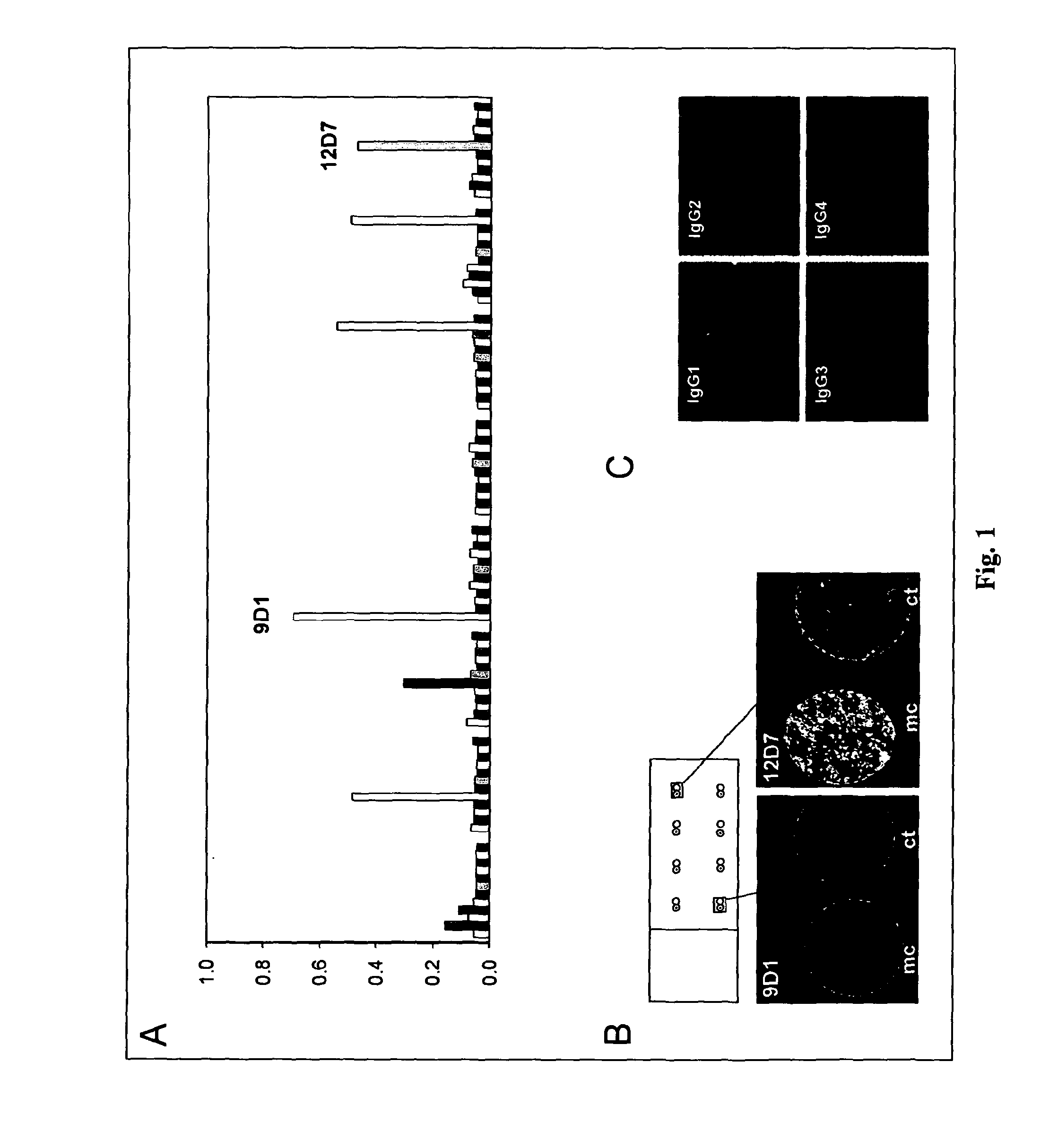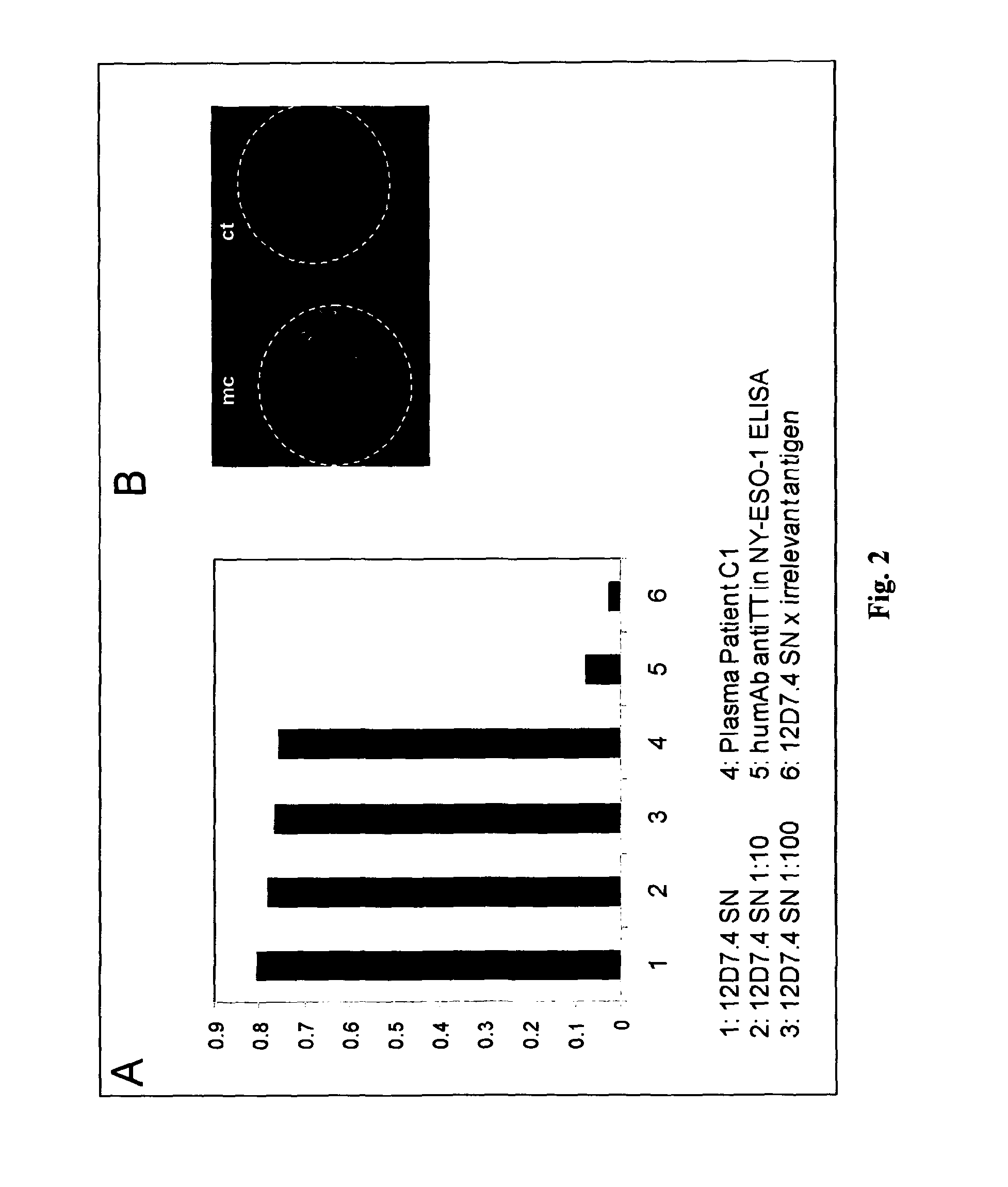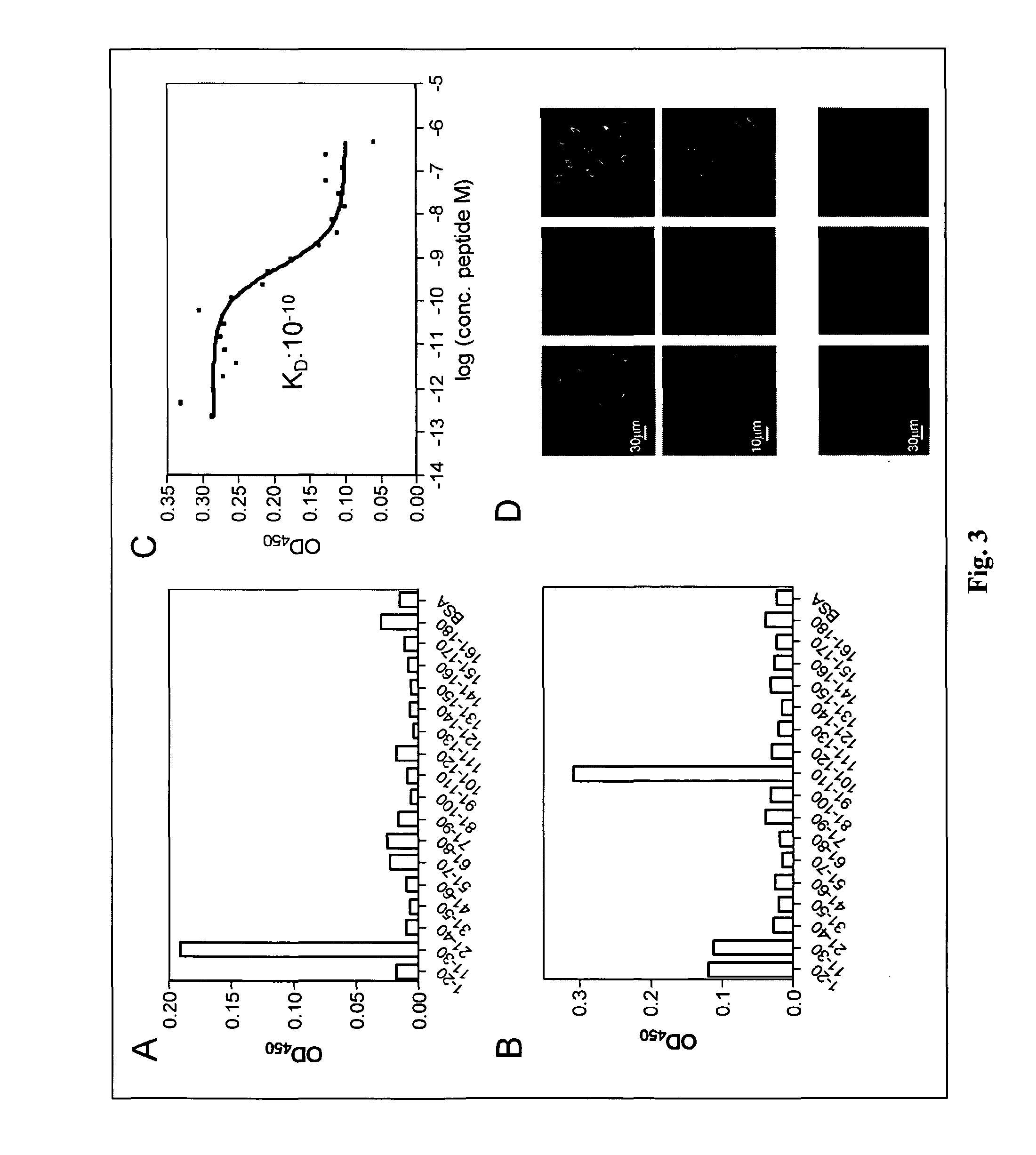Monoclonal human tumor-specific antibody
a human tumor and antibody technology, applied in the field of human antibodies, can solve the problems of difficult to assess the therapeutic significance of the disease, lack of straightforward experimental approaches,
- Summary
- Abstract
- Description
- Claims
- Application Information
AI Technical Summary
Benefits of technology
Problems solved by technology
Method used
Image
Examples
example 1
Identification of NY-ESO-1-Specific B Cells from PBL of a Melanoma Patient
[0088]A melanoma patient was selected with a serum titer to the taa NY-ESO-1 in ELISA and on autologous lymph node sections obtained at biopsy. Post vaccination with recombinant vaccinia virus expressing full length NY-ESO-1 a partial clinical response demonstrated by the regression of two NY-ESO-1-positive metastases in the liver was observed. 50 ml Peripheral blood was collected from the patient and surface IgM / IgD double-negative B cells representing the Ig-switched memory B cells were isolated and cultured after immortalization using a modified Epstein Barr virus transformation protocol (6). 100.000 memory B cells were obtained and were seeded into 96 well microtiter templates at 50 cells per well. After 3 weeks of culture growing clones were observed in the culture wells and the medium conditioned by the B cell cultures was assayed for the presence of antibodies specific to NY-ESO-1. As a first screening ...
example 2
Molecular Cloning of an NY-ESO-1-Specific Antibody Secreted by Cultured Memory B Cells
[0091]Previous attempts at the cellular cloning of identified antigen-specific EBV-transformed human memory B cells had not been successful. Therefore, in accordance with the present invention it was embarked on a molecular cloning strategy based on RT-PCR of single sorted cells harvested from well 12D7 in order to isolate the antibody clone responsible for the above described staining pattern. 32 cells were harvested and deposited as single cells directly into PCR tubes.
[0092]After cDNA synthesis, the heavy and light chain variable regions of human immunoglobulin were amplified using a nested PCR approach (7). Heavy and kappa light chain sequences with 16 of the 32 sorted cells were obtained. PCR for lambda light chain variable sequences did not give a product with any of the cells. Sequence analysis identified 4 distinct antibody clones which were numbered according to their relative abundance. C...
example 3
NY-ESO-1 Specific Human Monoclonal Antibody Manhattan Binds to Peptide NY-ESO-111-30 with a KD of 10−10
[0095]To identify the epitope recognized by Manhattan on NY-ESO-1 ELISA was performed using overlapping peptides spanning the complete NY-ESO-1 protein. As shown in FIG. 3A, Manhattan binds to a peptide representing the amino acids 11 to 30 from the NY-ESO-1 protein but not to the two adjacent peptides that span amino acids 1-20 or 21-40. This suggests that the epitope recognized by Manhattan lies at the junction of these two peptides around amino acid 20 of NY-ESO-1. This epitope, among others was also recognized by antibodies contained in serum of patient C1 (FIG. 3B).
[0096]The avidity of Manhattan was determined by competition ELISA using increasing concentrations of soluble NY-ESO-111-30 peptide to compete for the plate bound peptide. As depicted in FIG. 3C, the antigen-binding equilibrium dissociation constant (KD) of the interaction of Manhattan with its cognate peptide was ...
PUM
| Property | Measurement | Unit |
|---|---|---|
| Molar density | aaaaa | aaaaa |
| Composition | aaaaa | aaaaa |
| Length | aaaaa | aaaaa |
Abstract
Description
Claims
Application Information
 Login to View More
Login to View More - R&D
- Intellectual Property
- Life Sciences
- Materials
- Tech Scout
- Unparalleled Data Quality
- Higher Quality Content
- 60% Fewer Hallucinations
Browse by: Latest US Patents, China's latest patents, Technical Efficacy Thesaurus, Application Domain, Technology Topic, Popular Technical Reports.
© 2025 PatSnap. All rights reserved.Legal|Privacy policy|Modern Slavery Act Transparency Statement|Sitemap|About US| Contact US: help@patsnap.com



